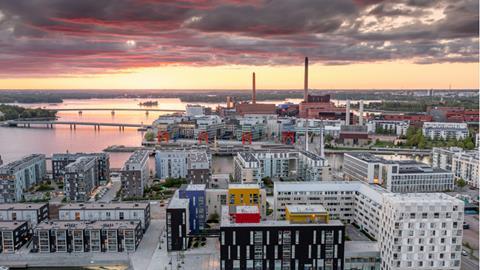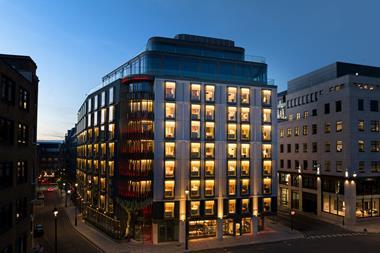Rising construction costs are beginning to squeeze developer margins amid occupier shift to more sustainable office space, according to new research from Savills.

The latest report from the professional services firm, Spotlight on European development - Spring 2022, underlines that record eurozone inflation continues to surprise investors going into the second quarter of the year.
Energy prices
The March 2022 eurozone inflation reading reached 7.5%, higher than consensus projections and now ahead of the UK, despite previous expectations that the eurozone would be more sheltered from higher price rises, due to less responsive consumer demand and spare capacity remaining in the employment markets.
'The main contributor to higher inflation in the eurozone has been the rising energy prices,' umderlines report author, Mike Barnes, associate director of commercial research in the European research team.
'The EU has announced plans to reduce Russian energy use following the war in Ukraine – of course, the process of replacing Russian oil will be relatively easier than substituting Russian natural gas.
'However, logistical challenges will still need to be overcome, and rerouting global energy supplies will take time. This is one of the main reasons why oil and natural gas prices are expected to remain historically high for much of 2022/23.'
Other surging commodity prices include steel, which rose to €1,400/tonne in March 2022, up from €460/tonne in 2020.
The rising prices of energy and raw materials have forced mills to cut output, although economists expect steel prices will correct lower in H2 2022. Meanwhile, ongoing labour shortages are adding to the costs.
Cost squeeze
In the UK, there are currently 50,000 job vacancies in the construction sector, according to the ONS, doubling since prior to the pandemic. Similarly, in the eurozone, the total job vacancy rate has reached a record 2.8% from the latest reading as developers are forced to pay higher wages to contractors.
'Higher inflation is ultimately applying more pressure on the ECB to raise interest rates. Capital Economics anticipates this will average 7% in 2022 and now expect a total of three interest rate rises in the second half of 2022,' says Barnes.
Expectations of rising interest rates have increased ten-year German bund yields to 0.8% in April 2022 (an increase of 120 bps YoY), which has subsequently increased debt costs across the real estate lending community, especially on new development.
Office hopes
Despite this outlook, there is some positive news. Adds report co-author Christina Sigliano, EMEA head of occupier services: 'Europe’s office development pipelines remain buoyant, amid stabilising office supply and occupier demand resuming following the pandemic. However, rising construction costs and shortages of materials and labour are adding pressure to supply chains and delaying office completions.'
In Q2 2021, Savills anticipated a total of 5.2 million m2 of new European office stock would complete during 2021; however, only 3.8 million m2 was delivered, with rising numbers of project timeframes pushed out until 2022/23.
'We now anticipate over 5.7 million m2 of space will be completed in 2022 (of which 49% is currently prelet), with a further 5.1 million m2 of space scheduled for 2023 (of which 23% is prelet). In total over the next two years, this marks a 43% increase per annum on the average level of completions over the previous five years.'
Despite the large development pipeline, rents are also likely to move in a favourable direction as occupiers regain confidence and resume post-pandemic decision making. Rising energy prices will further accelerate the demand for more energy-efficient office buildings, the report adds.
While a slight rise in vacancy rates is possible, although this will be largely accounted for by a rise in the level of secondary office stock as the availability of higher quality stock remains scarce.
Savills estimates the average cost of raising an office’s EPC rating from Grade D to Grade B stands at circa €500 per m2. 'As a result, we anticipate the gap between prime and secondary rents to increase, creating new opportunities for developers to asset-manage older assets to achieve rental uplift,' Sigliano concludes.









